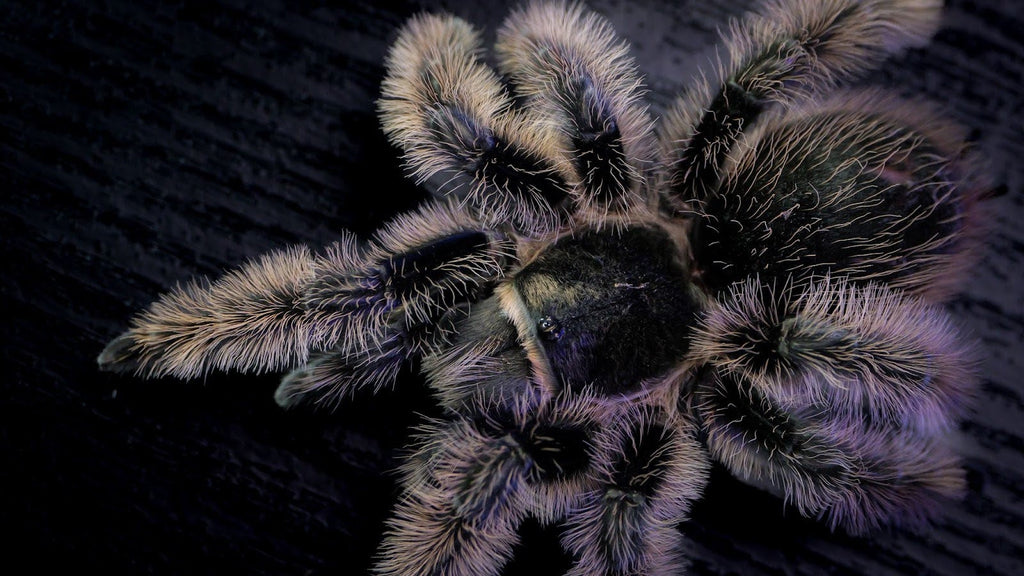The Care and Maintenance of the Curly Hair Tarantula

Difficulty Level: Beginner
The Curly Hair Tarantula Tliltocatl albopilosus is one of the hardiest and most beginner-friendly tarantulas you can add to your collection. Formerly known as Brachypelma albopilosum, this species is affordable, slow-moving, generally non-defensive, and fairly forgiving when it comes to husbandry. Spiderlings may be a bit more skittish at first, but as they mature, Curly Hairs typically become calm and often-visible display tarantulas. Keeping them healthy is straightforward—a basic bioactive setup and a stable room temperature are all you really need. Plus, because T. albopilosus has been a staple in the hobby for decades, finding captive-bred spiderlings and juveniles is easy. Just make sure you’re avoiding wild-caught adults to help prevent illegal poaching and smuggling.
Natural History and Description
Tliltocatl albopilosus is native to the tropical rainforests of Nicaragua, Honduras, and Costa Rica. You’ll often find them near riverbanks or the bases of trees, where humidity remains steady year-round. In the wild, they are semi-fossorial, so in captivity, deep, moisture-retentive substrate is key. Mimic their natural environment by offering enough depth for burrowing and creating a subtle moisture gradient. This helps your tarantula feel secure while reducing fall risks.
These tarantulas are known for their thick, curly setae, giving them a fluffy, almost comical appearance. In the hobby, the darker form is often called the Honduran Curly Hair, while the lighter, golden-brown form is considered the Nicaraguan Curly Hair. Some breeders believe the Nicaraguan version represents the “true” bloodline, although DNA work is still ongoing. Regardless, both forms require the same care.
Recommended Supplies for a Curly Hair Tarantula
-
Terra Aranea Bioactive Substrate Kit – This kit includes Terra Aranea bioactive substrate, leaf litter, sphagnum moss.
-
Cork Bark – Perfect for hides and structure.
-
Live Pillow Moss – Boosts localized humidity.
-
Live plants for tarantulas – provide natural structures, boosts humidity, and fuel the bioactive cycle
-
Springtails– Bioactive cleanup crew.
-
Botanicals and Seed Pods – Natural décor and enrichment.
-
Bio Dude Acrylic Display Box Medium – Good for juveniles.
-
Bio Dude Acrylic Display Box Large – Great for sub-adults.
-
Tarantula Cribs Enclosures – Best choice for spiderlings and adults.
-
Solar Grow LED – Plant lighting that also helps create a day/night cycle.
-
Bio Dude Water Dish – Shallow, safe hydration source.
-
Pressure Sprayer Mister – For spot misting when needed.
-
Hemostats and Feeding Tools – For safe prey handling.
Enclosure Size & Setup
Spiderlings
-
Use a small enclosure like a Sling Crib or 3" Tarantula Cube.
-
Fill at least 2/3 of the space with Terra Aranea.
-
Keep the substrate damp (not swampy) until they grow out of the sling stage.

Juveniles
-
Step up to the Bio Dude Acrylic Display Box Medium or a Tarantula Cribs Medium Slider Crib or 8" Cube.
-
Make sure the enclosure is wider than it is tall, these are terrestrial tarantulas and can get injured if they fall.
-
Fill the enclosure halfway with substrate and add cork bark and leaf litter for enrichment.
Sub-Adults
-
Upgrade to the Bio Dude Acrylic Display Box Large or a Tarantula Cribs Cuboid or 12" Cube.
-
Setup is the same as juveniles with horizontal floor space, deep substrate, and good hides.
Adults
-
Tarantula Cribs Large Slider Crib, 12" Cube, or 18" Cube are perfect.
-
Ideally, the enclosure should be 3-5× the tarantula’s diagonal leg span.
-
Fill at least half the enclosure with substrate to support burrowing and minimize fall distance. You don't want the distance between the top of the enclosure and the top layer of substrate to be more than 2 times the leg span of your tarantula, but I typically go no further than 1.5 times my tarantula's leg span.
Lighting, Heating & Humidity
-
Lighting: No UVB needed. A Solar Grow LED is perfect for a basic day/night cycle and will help your plants thrive in the tarantula enclosure.
-
Heating: Keep ambient temps between 68°F-76°F (20-24°C). No heat lamps or under-tank heaters! If you must add heat, use a thermostat-controlled heat pad on the side of the enclosure, because tarantulas will burrow down to find cooler temperatures. If you place the heat pad on the bottom, the results could be disastrous.
-
Humidity: Maintain moderate humidity by keeping the lower substrate layers moist and letting the top layers dry between waterings. Usually, just overflowing the water bowl once or twice a month is enough.
Substrate
Use Terra Aranea as the base and mix in some Leaf Litter and Sphagnum Moss for a natural setup. You can jumpstart the bioactivity with Bio Dude’s Bio Shot. I usually stick with springtails alone for my setups to take care of any mold that may form. Isopods can disrupt a tarantula during its molt.
Décor & Plants
Add botanicals and seed pods, cork bark hides, leaf litter, sphagnum moss, and a bit of Exo Terra Stone Desert to create a natural look. If you’d like to add live plants, opt for durable options like pothos, hoya varieties, and arrowhead vines—but expect your tarantula to bulldoze them eventually!
Feeding Schedule
Spiderlings
-
Feed 2x per week with pinhead crickets, fruit flies, or pre-killed roach nymphs.
-
Remove uneaten prey after 24 hours.
After Molt: Wait 24-48 hours before offering food again. Check that the fangs are solid black.
Juveniles
-
Feed every 7-10 days with small to medium crickets or Dubia roaches.
-
Adjust feeding based on abdomen size. If it’s thinner than the carapace, feed more often. If it's plump, cut back.
After Molt: Wait 3-7 days post-molt to feed.
Adults
-
Feed every 2-3 weeks with 4-5 large crickets or one Dubia roach.
-
Same abdomen-size rules apply to avoid obesity and molting issues.
After Molt: Wait 5-10 days after they molt to feed.
Supplements
Tarantulas do not need calcium or multivitamin supplements. However, it's essential to gutload your feeders with fresh fruits and vegetables 24 hours before feeding.
Temperament
Curly Hairs are about as laid-back as tarantulas get. Adults are usually calm and stay out on display most of the time. Spiderlings may be more reclusive, but this behavior typically fades with age. While they rarely show defensive behavior, they may flick urticating hairs when seriously stressed.
Final Thoughts
The Curly Hair Tarantula Tliltocatl albopilosus has earned its reputation as one of the best beginner species in the hobby. With its fluffy appearance, calm demeanor, and long lifespan, it's a great ambassador for new keepers and a dependable favorite for seasoned enthusiasts.
Thanks to their hardy nature and gentle temperament, T. albopilosus remains a staple for hobbyists of all experience levels. Their high reproductive output ensures a steady supply of captive-bred specimens, helping reduce pressure on wild populations. By supporting and prioritizing captive breeding, we can sustain healthy populations in the hobby and keep this remarkable species available to responsible keepers around the world.
If you’re looking for a hardy, low-maintenance tarantula that’s beautiful, calm, and rewarding to care for, the Curly Hair checks all the boxes.
Written by Richard from Tarantula Collective – 5/1/2025
- Josh Halter










